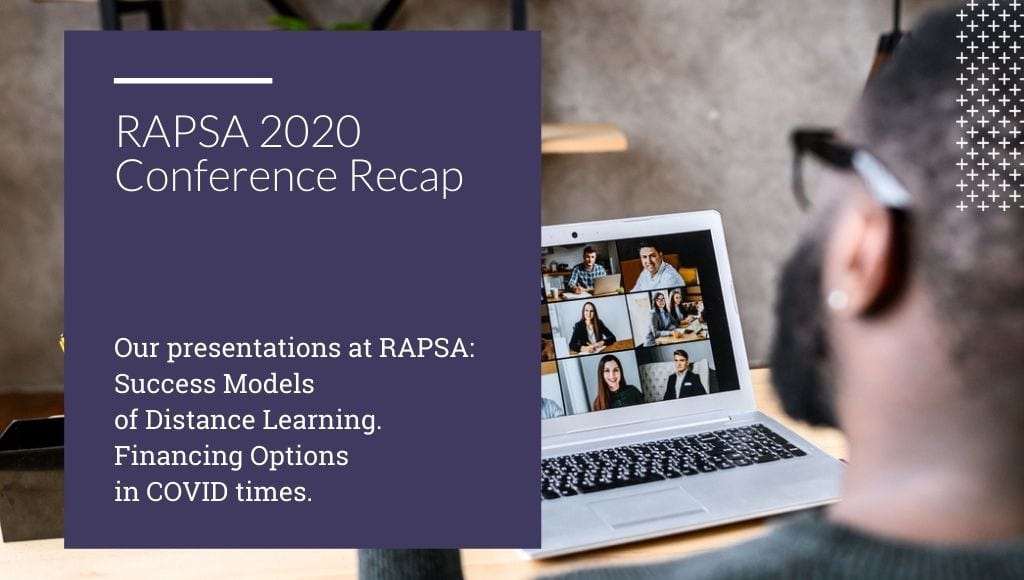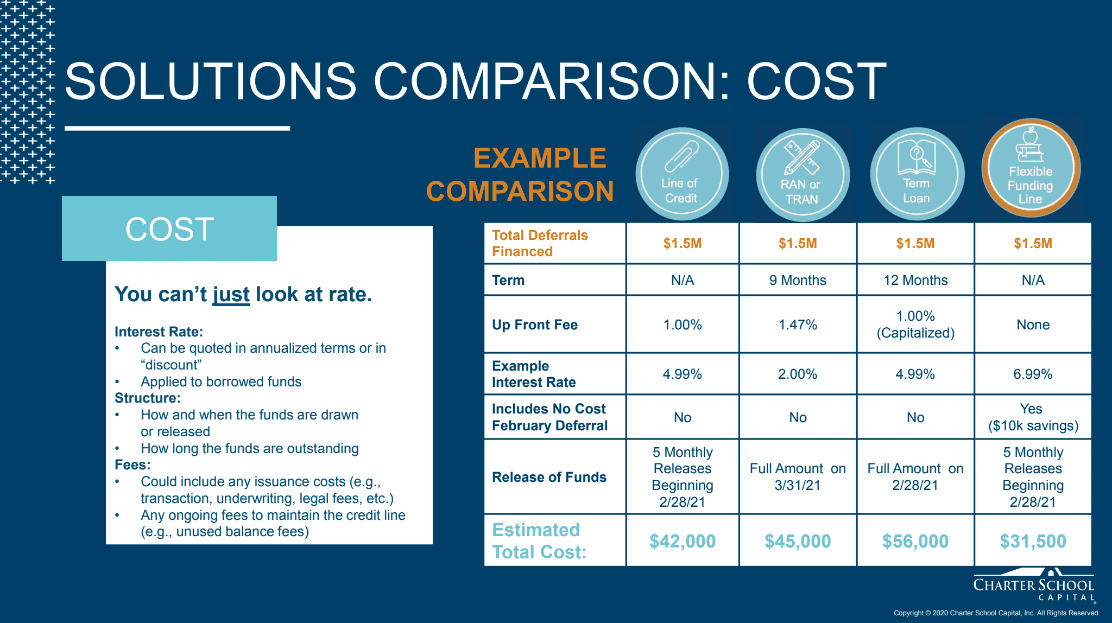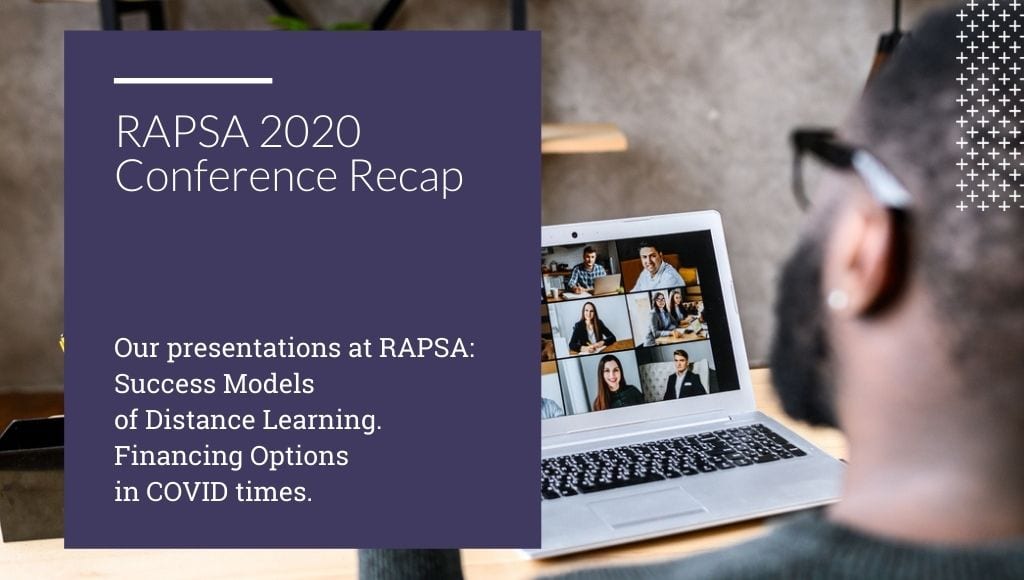 We were honored to present two sessions at RAPSA 2020.
We were honored to present two sessions at RAPSA 2020.
As an organization, RAPSA focuses on helping educators working with at-promise students – with an emphasis that given the right support, all students can succeed.
It was fitting therefore that we featured Dr. Ramona Bishop as a speaker. Throughout a career spanning over two decades, Dr. Bishop has been a teacher, assistant principal, assistant superintendent, superintendent and now the CEO of her own public charter school, ELITE Public Schools. Dr. Bishop and her colleagues created Elite with the specific mission of helping under-served students – those students the mainstream system might have left behind.
Dr. Bishop was joined by our own Tricia Blum, VP of business services at Charter School Capital. Prior to joining CSC, Tricia was the CEO of a five-campus charter school – and this experience gives her solid understanding of the challenges faced by school leaders.
Dr. Bishop spoke about the components of ELITE as a school: entrepreneurial skill development, language development, dual-immersion pathway and the African-American and Latino Cultural Heritage program.
Tricia Blum gave some background on Charter School Capital. Our company has supported over 700 charter schools, serving over 1,250,000 students – and has invested over $2 billion in serving charter schools better serve their communities.
As a relatively-young school with a sizable student body (400 students), ELITE transitioned to online learning in Match of 2020 over the course of three days. The transition first started with paper packets distributed to students, but soon moved to Zoom-driven sessions, and email reminders and phone calls.
The transition exposed the huge digital divide in the student population. Many didn’t have a laptop, or internet access. The shortcomings of the original distance learning model became painfully visible. Working with parents, listening to parents’ feedback, input and ideas became paramount.
Lessons Learned
- Through this dialog with parents, the charter school learned that this transition required more than just academic support – it required mental-health support, infrastructure, new educational formats, attention to students with focus challenges, student intervention groups.
- The school responded by providing small learning groups after class day, the creation of a “learning space,” and ongoing discussions with parents to constantly improve their approach.
- Staff and educator wellness became critical. Providing support for the teachers was highly prioritized.
The key takeaway is that a successful school is all about relationships. It hinges on ongoing communication with the key constituent groups – teachers, staff, students, parents, advocates, and the greater community.
Dealing with Uncertainty
Not only were the students confronted with the uncertainty of a global pandemic, but also with unprecedented (in their lifetime) racial strife and a highly-charged political climate, revealing systemic racism and deep divides, all of which signaled threats to an already-vulnerable student population.
The school provided context, by teaching about social-justice protests of the past, pandemics of the past, and past elections. The school used this moment as an opportunity to rethink, rebrand and re-strategize – to find even better ways to be there for the students.
Creative and innovative teachers seized the moment to thrive, leveraging technology, social media and new channels to enhance the student experience and advocate for their students.
Lessons Learned:
Create spaces and moments for students to process current events, and deal with their anxiety and stress
These spaces should be unbiased – including bringing outside third-parties to help navigate these times.
Teachers asking themselves, “how can I make more of a positive impact?” – and the school following this with “how can I better support the teacher?”
On Leadership
Dr. Bishop spoke about the role of a leader. More than a manager, a leader is there to motivate, to inspire, to provide the larger vision. Dr. Bishop calls this “step up, and step back.” Step up, meaning occupy fully the role of a leader. Be willing to be the person who others follow, be willing to be the voice of inspiration and certainty – even when at times that certainty might be hard to muster. And step back, meaning avoid micro-managing, let your teachers and staff exercise their roles fully, allow them to have agency and voice. And step back also to see the bigger picture, to gain perspective, which one can then use to provide vision and inspiration.
Lastly, Dr. Bishop spoke of how leaders should seek support as well. Support from the community, and support from allies and partners. Dr. Bishop spoke about the key role the parents and families of students played in these times, helping the school continue to grow by 20% even in the middle of a pandemic – and the key role of Charter School Capital, providing much needed capital that filled the funding gaps often experienced by a growing school.
Financing Options in the Age of COVID-19
We also brought to RAPSA a presentation on financing options, led by Ryan Eldridge, Senior New Business Specialist.
Ryan spoke about the financial solutions provided by Charter School capital, comparing our solutions to other paths available. He also touched on key factors to consider in making financial decisions at a charter school.
In words that echoed those of Dr. Bishop, Ryan spoke about what’s now officially a recession.
He spoke then about challenges faced in various states:
Schools in Georgia are experiencing a 10% cut in Quality-Based Education (QBE)
- In Ohio, there’s a 3% cut in general funding
- In Arizona, schools saw an additional $200 million in additional state funding
- In Texas there were no cuts, and some schools received additional funding through specific programs
Financing Options
Ryan compared the available options for charter schools: Term loans, RAN or TRAN, Lines of credit, and a flexible funding line. According to Ryan, these should all be evaluated against the following factors: Flexibility, capacity, certainty and cost.
Further, in terms of the cost, this goes beyond just looking at the rate. The rate is influenced by annualized terms, by how it’s applied to the borrowed funds, by how the funds are released, how long the funds are outstanding. Lastly, issuance fees and any ongoing fees can be an important factor. During the webinar, Ryan showed a chart where $1.5M in funds have four different possible total cost:

Ryan’s comparison matrix for the four financing options available showed pros, cons and considerations:

For more information, get in touch with us using the contact form on this site.
